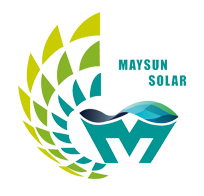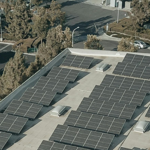With rising energy costs, solar power has become a crucial tool for businesses looking to cut expenses and enhance efficiency. However, solar investments go beyond equipment purchases—they also involve long-term returns and operational efficiency. As a result, accurately calculating the return on investment (ROI) for a solar system and optimizing long-term benefits has become a primary concern for investors.
Why Is ROI Crucial for Solar Investments?
ROI is a key metric in evaluating the profitability and payback period of a solar project, directly influencing financial decisions. Accurate ROI calculations help investors:
- Assess the long-term benefits of a solar system and reduce electricity expenses.
- Maximize returns by leveraging policy incentives.
- Compare different solutions to select the optimal configuration.
Key Factors Affecting Solar ROI
ROI is not a fixed value; it is influenced by several variables:
- System Cost– Includes solar modules, inverters, installation, and maintenance expenses.
- Power Generation– Affected by sunlight availability, module efficiency, and installation angles.
- Electricity Price Trends– Expected increases in electricity prices enhance long-term returns.
- Self-Consumption Rate– Determines how much electricity savings a business can achieve.
- Maintenance Costs– Smart O&M can lower the levelized cost of energy (LCOE).
- Policy Incentives – Support measures like PPAs, grid subsidies, and tax benefits.

Basic ROI Calculation Method
ROI=Initial InvestmentAnnual Revenue−Annual Operating Costs×100%
Where:
- Annual Revenue= Annual Power Generation × Electricity Price × Self-Consumption Rate + Excess Energy Sold to Grid
- Annual Operating Costs= Maintenance Costs + Inverter Replacement Costs + Other Operating Expenses
- Initial Investment= Solar Modules + Inverters + Installation + Related Equipment
This formula provides a basic assessment of investment returns but does not account for critical variables that impact long-term profitability.
Key Variables Affecting ROI
- Electricity Price Trends– Future increases in electricity prices will lead to higher savings, improving ROI. Historical data shows that industrial and commercial electricity prices tend to rise, making future price forecasts essential.
- Maintenance Costs– Implementing smart maintenance systems can lower long-term operational costs and enhance efficiency, optimizing ROI. For example, remote monitoring and predictive maintenance can prevent unexpected failures and additional expenses.
- Policy Incentives– Government incentives such as tax exemptions, subsidies, and power purchase agreements (PPAs) can significantly shorten the payback period and enhance overall ROI. As policies vary by region, investors should analyze the specific market conditions.
While traditional ROI calculations offer a straightforward approach, they do not fully capture the actual long-term profitability of a solar system. Investors should integrate these key variables and adopt a more comprehensive calculation method to make economically sound investment decisions.
Case Study: How Real-World Data Impacts Solar ROI
In solar investments, system size, energy storage configuration, and self-consumption rate significantly affect ROI (Return on Investment). By analyzing real data, we can better understand the profitability of different solar solutions. Below is a comparison of two solar projects of different scales:
Parameters |
100 kWp Commercial Rooftop Solar |
500 kWp Industrial Rooftop Solar |
Total Investment Cost |
€80,000 | €350,000 |
Annual Power Generation |
110,000 kWh | 550,000 kWh |
Self-Consumption Rate |
70% | 85% |
Grid Electricity Price |
€0.18/kWh | €0.16/kWh |
Excess Energy Feed-in Tariff |
€0.08/kWh | €0.07/kWh |
Annual O&M Cost |
€1,500 | €6,000 |
Annual Revenue |
€14,220 | €85,525 |
ROI (Excluding Policy Support) |
15.9% | 22.7% |
Payback Period |
6.3 years | 4.8 years |
Key Takeaways from the Comparison
- Larger Solar Systems Have Higher ROI– The 500 kWp industrial rooftop system achieves a higher ROI (22.7%) compared to the 100 kWp commercial rooftop system (15.9%). This is mainly due to economies of scale, where unit costs are lower, and a higher self-consumption rate boosts returns.
- Increasing Self-Consumption Maximizes Profitability– Businesses that maximize self-consumption and minimize the amount of electricity fed into the grid at lower rates can significantly improve their ROI.
Strategies to Maximize Solar ROI
To optimize ROI, businesses should focus on enhancing power generation efficiency, reducing operational costs, and leveraging policy incentives.
1. Invest in High-Efficiency Modules and Smart O&M
High-Efficiency Solar Modules (such as TOPCon and HJT) improve power output, shortening the payback period.
Smart O&M Systems (AI monitoring + remote diagnostics) reduce failure rates, extend equipment lifespan, and lower the Levelized Cost of Energy (LCOE).

2. Integrate Energy Storage to Boost Self-Consumption
Battery Storage Reduces Grid Dependence – Enhancing energy autonomy for businesses.
Peak Shaving & Load Shifting – Charging batteries when electricity rates are low and discharging during peak hours maximizes electricity cost savings.
3. Utilize Government Incentives and PPA Models
Government Incentives – Tax exemptions, investment subsidies, and net metering policies can significantly shorten the payback period.
Power Purchase Agreements (PPA) – A zero upfront investment model, ideal for businesses with limited capital but looking to cut electricity costs.
Conclusion
Maximizing solar investment returns requires balancing short-term ROI with long-term profitability. By using high-efficiency modules, implementing smart O&M, increasing self-consumption, and leveraging policy incentives, businesses can lower costs and enhance returns. The ultimate goal is to achieve the optimal investment strategy:
Short-Term ROI + Long-Term Cash Flow + Additional Benefits = Maximum Investment Value.
Since 2008, Maysun Solar has been dedicated to producing high-quality photovoltaic modules. Our range of solar panels, including IBC, HJT and TOPCon panels, and balcony solar stations, are manufactured using advanced technology and offer excellent performance and guaranteed quality. Maysun Solar has successfully established offices and warehouses in many countries and built long-term partnerships with top installers! For the latest quotes on solar panels or any photovoltaic-related inquiries, please contact us. We are committed to serving you, and our products provide reliable assurance.
Recommend Reading:

How to Effectively Clean and Intelligently Maintain Photovoltaic Systems for Optimal Performance?
Explore how scientific cleaning and intelligent maintenance can ensure the efficient operation of commercial and industrial photovoltaic systems. Practical advice covers module cleaning frequency, monitoring system configuration, and long-term strategies for energy savings and performance enhancement.

2025 European Photovoltaic Policy Map: Deployment Paths and Regional Strategies for Commercial and Industrial Photovoltaics
A comprehensive analysis of the 2025 European commercial and industrial photovoltaic policy map, focusing on deployment strategies, incentive comparisons, and zero-investment models to support businesses in achieving an efficient and green transition.

Empowering Factories with Solar Energy A Strategic Tool for Controlling Production Electricity Costs
Commercial and industrial solar is becoming a key solution for factories to reduce electricity costs and hedge against price fluctuations. This article systematically analyzes its deployment models, cost advantages, and sustainable value pathways.

How Businesses Can Offset Carbon Taxes with Solar Power
This article analyzes the latest carbon tax policies and photovoltaic deduction strategies, helping European businesses legally reduce taxes, increase profits through solar investment, and achieve a win-win situation for both economy and environment.

Forecast and Response: Seizing the Next Decade’s Growth Dividend in Europe’s Commercial and Industrial Photovoltaics Market
Maysun Solar analyzes the growth trends of commercial and industrial photovoltaics in Europe over the next ten years, from policies and ESG to technological innovation, helping companies seize the initiative in the energy transition.

How to Calculate Solar System ROI and Optimize Long-Term Returns?
Solar power is becoming a key solution for businesses to reduce costs and improve efficiency. Accurately calculating ROI and optimizing long-term returns are essential to maximizing investment value.



